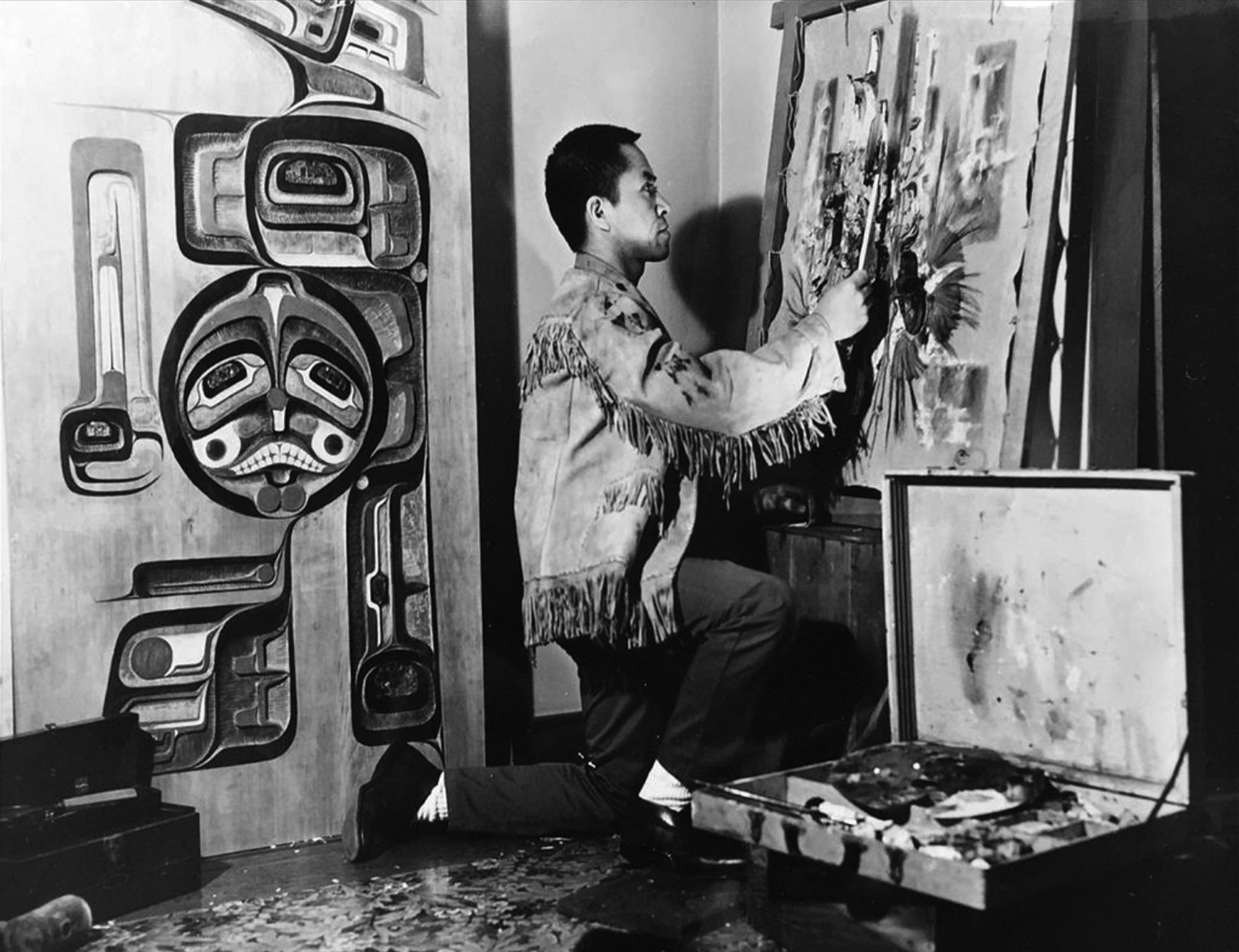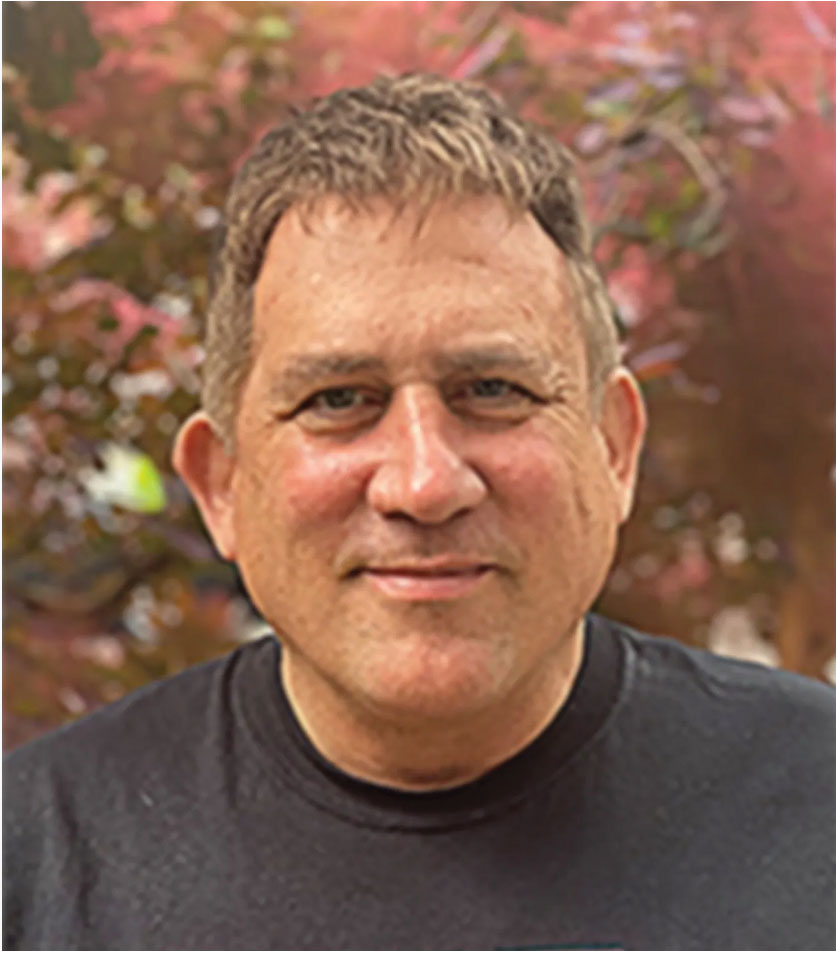In memory: Lawney Lawrence Reyes and Dave Barnett
Viewpoint Magazine pays tribute to artist Lawney Lawrence Reyes and Cowlitz Indian Tribe Chairman Dave Barnett.

Lawney Lawrence Reyes, courtesy of Seattle P.I. 1971 | MOHAI
Lawney Lawrence Reyes, ’59, was an artist, author, activist and an enrolled member of the Confederated Tribes of the Colville Reservation and the Sinixt Band, and of Filipino descent. He started life in Bend, Oregon, spent part of his childhood on the Colville Reservation.
His parents opened a Chinese restaurant in Grand Coulee to feed the workers there to build the Grand Coulee Dam. He had a front-row seat to the massive public works project that would eventually inundate his family’s hometown of Inchelium.
When his parents divorced several years later, a judge sent Reyes and his sister, Luana, to boarding school at Chemawa Indian School near Salem, Oregon. They were there for two years. He learned about different Native communities from the other children and started drawing and painting. After two years, Reyes and his sister returned to their father in Eastern Washington and moved around with him as he sought work.
As a young adult, Reyes earned a degree at Wenatchee Junior College before moving to Seattle to attend the UW in 1952. A health issue caused him to miss the start of his junior year, so Reyes instead enlisted in the Army, which took him to Germany for a few years. From there he explored other countries before returning to the UW to complete his degree in interior design in 1959. He worked as a designer for Seattle First National Bank (later Seafirst) and also started his professional art career. During the 1970s, he co-designed the Daybreak Star Indian Cultural Center in Seattle, a resource for urban Indians made possible by activism led by his younger brother Bernie Whitebear. He also became the art procurer for Seafirst Bank, helping develop the corporation’s fine art collection.
Throughout the 1980s and 1990s, Reyes created sculptures and public artworks throughout Seattle. He received numerous awards for his art. In retirement, he became an author. His writing includes “White Grizzly Bear’s Legacy: Learning to Be Indian” and “B Street: A Gathering of Saints and Sinners,” both published by UW Press. He also wrote about his brother in “Bernie Whitebear: An Urban Indian’s Quest for Justice” (University of Arizona Press).
Reyes died on Aug. 10 at the age of 91.

Dave Barnett, courtesy of the Cowlitz Indian Tribe
Dave Barnett, ’84, started running as a little kid and never slowed down, winning every race he ran in high school and most he entered at the University before setting a scorching pace in life and service to the Cowlitz Indian Tribe.
The general council chairman for the Cowlitz Tribe had a history of service. He helped the Cowlitz Tribe open the Ilani Resort & Casino and move toward a number of social and cultural goals. He died unexpectedly on May 28 of a heart attack at the age of 64 at his home in Shoreline. The tribal news release announcing his death listed a number of initiatives that Barnett was actively working toward at the time of his death. “If you measure length of life by how fast a guy moved, he outlived us all,” Cowlitz Chief Operating Officer Kent Caputo told The Seattle Times.
Barnett was the son of John Barnett. The two helped guide the Cowlitz to federal recognition in 2000. Barnett was elected chairman in 2021.
Barnett had also worked on a project with The Language Conservancy to help revitalize the tribe’s language and implemented vote-by-mail elections. He worked to ensure all tribal members received equal distribution of COVID-19 relief funds and universal health care, and sought equal distribution of casino earnings.
Barnett attended the UW on a scholarship after one of the most distinguished high school cross country and track careers in state history. He was a high school all-American after winning every race he participated in during his junior and senior seasons at Aberdeen High. He won more than 20 races at the UW, turning in a 1-mile time that remains one of the fastest in school history, and participated in the NCAA championships.
He earned a degree in communications and media studies.